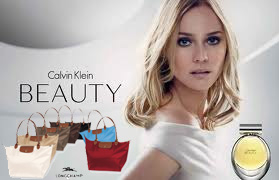
Some foreign brands that knew enormous popularity at one time in Western countries have found high ground again in recent years, especially with Chinese customers.
(Ecns.cn)--Some foreign brands that knew enormous popularity at one time in Western countries have found high ground again in recent years, especially with Chinese customers, revealed the Globe on January 10.
They entered the Chinese market with a new appearance and clever marketing strategies, positioning themselves as high-end or luxury brands. Some in fact have closed most of their chain stores in their home country, blossoming quickly into well-known, popular names in China, added the magazine.
Calvin Klein
Calvin Klein (CK) is a brand founded by American fashion designer of the same name.
Headquartered in Midtown Manhattan, New York City, this fashion house, now predominantly known for its underwear, started as a producer of designer jeans and rode the height of fame at the end of the 1970s.
Starting in the 1980s however, CK began losing businesses due to a grim jeans market, and gradually shifted its focus to other areas that include underwear, accessories and perfume. It was eventually merged with Phillips-Van Heusen in mid-December 2002.
Currently, CK is a not an attractive brand in the U.S. anymore, marketing medium-priced products. "New Yorkers wear Prada, Miu Miu and Gucci, but definitely not CK, except one or two pieces of underwear at most," commented an editor of a U.S.-based fashion magazine.
However, the situations for CK in Asian countries are quite different; here CK not only created a new brand image for itself but also found markets with considerable potential.
Statistics show that China's contribution to CK's total revenue from Asia tops all other Asian countries,contributing 70 percent to tht figure. By 2010, CK's outlet stores in China had surpassed 300.
Besides promoting itself as a leading underwear brand, CK also spared no effort (spared no effort is the phrase)to marketing its garments in China, and have attracted quite a number of youth purchasers, though the prices are almost double those in the States.
Longchamp
If you have traveled in France, you must be familiar with various dumpling-shaped bags by Longchamp, an old French brand founded in 1948.
More interestingly, Longchamp enjoys widespread popularity among all age groups, including grandmas and young girls, with a fair price that could be as low as 55 euros per bag.
Once their product sold like hot cakes, but these days Longchamp has been losing business to its mail order rivals. According to Longchamp's CEO, nearly two thirds of the company's total products used to be produced in France, but since the financial crisis of 2008, they have moved most of the production bases out to developing countries.
French Revue de Modes, a France-based fashion magazine, added that Longchamp only keeps a small factory in France, and most of its bags are made in countries like China and Mexico.
Longchamp is attached high status in China. Its 250-square-meter outlet store—the biggest in Asia—is located in Wangfujing, one of the capital's famous business streets.
In accordance with its privileged status, prices are pushed up too, averaging more than 1,000 yuan per item, three to four times higher than those sold in Europe.
However, the new "high-end" image turned out to be the apple of many young eyes, especially China's trendy white-collar workers. Miss Liu, who works for a foreign company, revealed that she had already bought nine Longchamp bags, and still waits for three that are 'subject to availability'.
Lafite
Lafite has been a favorite of Western wine collectors, but began losing its halo in part thanks to the fragile global economy and competition from other brands, mentioned the Globe.
For Europeans, Lafite is not the only choice of luxury wine brands. Latour, Haut Brion, Margaux and Mouton are all equals in terms quality or status.
Facing a grim market and seeking to stave off an overproduction crisis, the European Union even encouraged grape planters to engage in other businesses than the cultivation of more grapevines.
As a result, consumers have tended to choose other brands of same quality, yet lower price.
However, in China, Lafite is almostr unassailable as a symbol of social status. A construction company officer told the Globe that Lafite is "de rigueur" at certain banquets. Many social climbers have never learnt a foreign language, but can recognize the distinctive "Lafite" label easily.
"Lafite won hearts of European nobles in the 19th century, attracted Americans in the 1970s and 80s, and is now conquering Asians," commented Serena Sutcliffe MW, head of Sotheby's international wine department.

Copyright ©1999-2011 Chinanews.com. All rights reserved.
Reproduction in whole or in part without permission is prohibited.